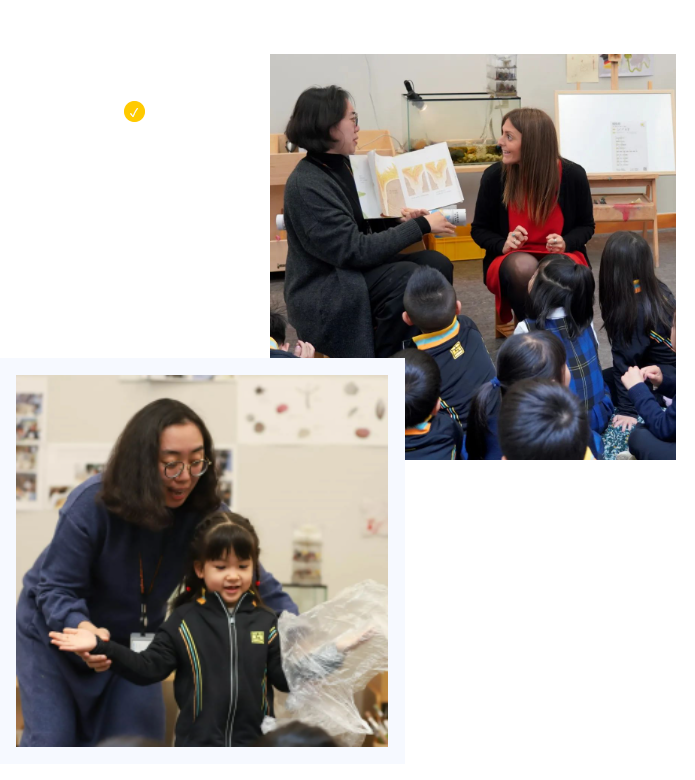
Kelly Hou
Early Years Music Teacher
During last month's Positive Parenting Meeting, we were honoured to share the wonderful moments at the Huili Nursery Hangzhou Atelier with parents. After the session, parents also raised many questions regarding daily life, such as "When can my child start learning musical instruments?" and "How can parents provide artistic resources for children at home?".

In Huili Nursery Hangzhou, we have sufficient art materials and a relaxed, creative environment. We can always see the children's rich imagination in and out of the classroom, and I often can't help but praise them as gifted artists. We also hope that this teaching style can be adapted outside the school by:
1
Listening to music in different ways
I believe listening to music is something we do with our children. How do we listen to music with our children? What can we talk about when we listen?
2
Music elements
This song is very slow, and the sound of this piece of music is very low. Do you hear the volume change in the music?
3
Emotion
The speed of this music is very slow, which makes me feel very calm. This music is very fast. I feel very happy and want to dance.
4
Imagination
When I hear this music, I feel something huge is moving. What do you think of it?
Of course, we can also provide the opportunity to listen to live concerts and introduce our children to different instruments. We can also watch them on the screen or read some picture books about music.

Voice development
We are born with an instrument called the vocal cords. We would like our children to explore the possibilities of their voice, rather than teaching them to sing directly.
The most natural voice development game is listening to the morning bird song with your child and imitating the bird song.
We can start by imitating and inspiring the child: "I heard a long, high-pitched sound like this......"
After the imitation, ask the child, "What did you hear?" The child may not be able to describe the length, speed or pitch at first, but after listening to the child imitate the sound, parents can conclude: "Oh, this bird's sound is very different from what I heard. It is short and soft, with a moderate pitch, not high or low."
In this interaction, the child can develop his voice, improve his listening skills, and permeate some musical knowledge and expressions into our game of imitating bird songs.
Body rhythm
In rhythm, the body is our instrument, and we use our body movements to express the rhythm, speed, pitch and other elements of music. For example, when we listen to music, we can encourage children to feel the rhythm and pace of music by walking, representing the upper and lower scales by moving their bodies in different spatial positions, and representing other volumes by expanding and tightening their bodies.

Review in art workshops with
children learning experience
In each learning documentation, we will share the children's project exploration process, which offers an opportunity for parents to know the art education resources and teaching methods. We also encourage children to create their works based on what they've learned and understood. Again, we learned to sing a song about spring together not so long ago. Spring flowers bloomed. Our purpose is not only to learn to sing but, more importantly, to encourage children to enjoy nature and discover its beauty.
EY3B Angela went home after class to share her music lesson with her family. She went to find flowers and took photos to share with us.
I hope that through music, children can learn to express their own emotions and get energy from the music and pass it on to others and learn to look at the world differently. I hope that they can enjoy music and let music accompany their growth.